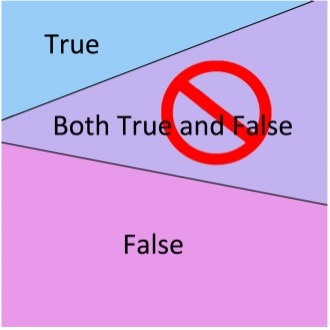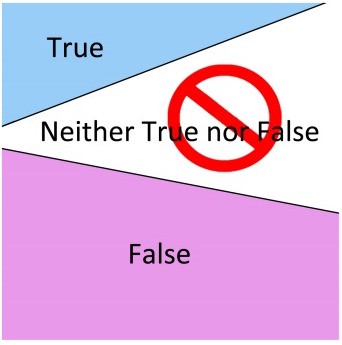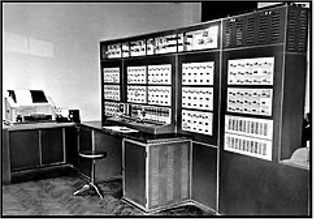Subsection 1.2.2 Exactly Two, No More No Less
Recall that we’ve just said that we’ll work with exactly two truth values, True and False. We’ll also assume two important laws of classical logic (the logic of our friend Aristotle):
Axiom 1.2.1. Law of Noncontradiction.
No statement (with a given meaning) can be simultaneously true and false.
No double dipping on truth.

Axiom 1.2.2. The Law of the Excluded Middle.
Every statement must have a truth value: true or false. It can’t be neither. Another way to say this is that, for any statement, either it or its negation must be true.
There’s no hole in the middle of the truth planet.

There’s a reason that, over the last couple of thousand years, most logicians have chosen to work in systems that assume these two laws (although there is some controversy about the second one). They are consistent with the kinds of reasoning that we want to do.
And there’s another, more modern reason for us to choose a two-valued logical system. It’s easier, cheaper, and more reliable to build computer circuits with two values than with three or more. So the fundamental unit of information is the bit (binary digit). Even quantum computing is based on a two-valued logic. Its fundamental unit of information is the qubit (quantum bit).
Remark 1.2.3. Nifty Aside.
It is possible (although very rare) to build computers using something other than a two-valued logical system.
The Setun (shown here), built in 1958 at Moscow State University, used ternary (three-valued) logic. So did the TERNAC, built in 1973 in the U.S.

But we should mention that there are logical frameworks that don’t accept these laws. For example, constructivist logic doesn’t assume the Law of the Excluded Middle.
Remark 1.2.4. Nifty Aside.
In constructivist logic, the only way to assert that there exists some object that has some interesting property is to exhibit it (or describe a way to construct it). Absent that, the claim that there exists such an object is neither true nor false. And this is so even if we’d be able to derive a contradiction by assuming that no such object exists.
Problems 1.2.5.
In each of the following problems, assume that it is clear who Riley and Terry are. Indicate whether the truth value of the statement (which could be either true or false) is guaranteed by the Principle of Noncontradiction, the Law of the Excluded Middle, or neither.
(a)
Riley and Terry are cousins or they are not.
Principle of Noncontradiction
Law of the Excluded Middle
neither
(b)
Riley and Terry are cousins and they are not.
Principle of Noncontradiction
Law of the Excluded Middle
neither
(c)
Riley and Terry are cousins or they are brothers.
Principle of Noncontradiction
Law of the Excluded Middle
neither
